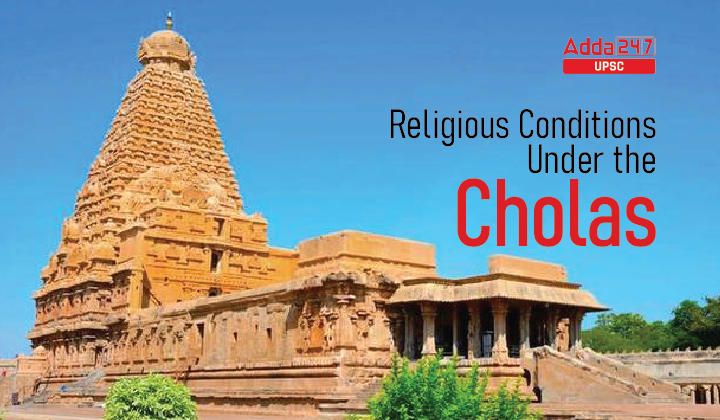Table of Contents
Why in news?
- There is a continuously escalating controversy concerning the existence of Hinduism during the Chola dynasty which erupted after the release of Maniratnam’s latest movie Ponniyin Selvan: I.
- The movie reflects Hinduism during Chola Dynasty and depicts the king as a Hindu ruler. However, filmmaker Vetrimaaran, Actor Kamal Hasan etc. questioned the depiction of Hinduism in the movie and claimed it to be inapt.
The Saivites!
- Chola kings were Saivites. They worshipped Lord Siva.
- They built many Siva temples.
- Parantaka I, Rajaraja I, Rajendra King Gandraditya and his queen Sembiyan madevi contributed more for the development of Saivism and Bakthi literature.
- Parantaka I covered the Siva temple with gold at Chidambaram. King Rajaraja I Built Brahadeeswarar temple (big temple) at Tanjore.
- Rajendra-I Constructed Siva temple at Polonaaruva in Ceylon and Gangaikonda Cholapuram. Lands, Jewels and vessels were donated to these temples.
Is Shaivism different from Sanatan Dharma?
- Saivism is the oldest pre-historic religion in India. For Vedic origin of Saivism, there are traces of Siva in the Vedic god, Rudra.
- From the primitive notion of Siva in Vedas, the later development of concept of Siva took place.
- The development and inclusion of Siva into Hindu pantheon as a powerful God is seen from the evidences available in Vedic literature, the Epic and Puranic literature and Tamil Sangam literature and devotional literature.
- In later development of Hinduism, Siva is considered as one of the Trinity and carries on the function of annihilation alone.
Saivism and Vaishnavism both are Integral to Sanatana Dharma
- Saivism and Vaishnasvism are the very popular forms of Hindu faith with large number of followers. Lord Siva and Lord Vishnu are worshiped as Supreme Being respectively in these religious traditions.
- In Hinduism Siva is one of the Trinity and carries on the function of Annihilation, while Brahma and Vishnu are said to be the Gods of creation and sustenance respectively.
- Both Saivism and Vaishnavism have diversified religious beliefs and practices. Various sects of them are found all over India. They are considered to be very ancient faiths in India.
- There are few direct and indirect references to these gods in the Vedas too.
Spread Of Vaishnavism under Cholas
- Chola rulers supported the spread of Vaishnavism.
- Saint Ramanujar was the contemporary of Chola Kings.
- Thiruvalangadu copper plates. Karanthai plates and Anbil plates talk about the religious conditions of the Chola period. Masimaham Mahamaham, Karthigai, Thaipusam Sivarathri, Chithiraivizha, Aipasivizha were important festivals celebrated during the Chola period.
Temples as great Centres of Learning
- Tanjore, Kumbakonam, Avudaiyarkoil, Kalahasti Tirukadaiyur and Kanchipuram were important temple cities.
- Bakthi songs were sung in all temples.
- Temples acted as centers of learning also.
- Temples helped the development of painting dance and music.
- Nambi Andar Nambi compiled the hymns of Saiva saints and Nathamunigal compiled the hymns of Vaishnava saints.
- Scenes of Periyapuranam portraits of Lord Siva were themes of the paintings on the walls of temples.
- Bharatha natyam and Kathakali dances were performed in temples at the time of festival times.
Royal Patronage
- The economic prosperity and religious contributions of Chola Kings increased the standard of life and aloes of the Chola society.
- By building many temples and mutts, the Chola kings contributed for the development of culture, art and architecture.
- The royal patronage increased the influence of Hinduism more.
- The temples and festivals of the Chola period will ever speak about the glory of the Cholas.



 TSPSC Group 1 Question Paper 2024, Downl...
TSPSC Group 1 Question Paper 2024, Downl...
 TSPSC Group 1 Answer key 2024 Out, Downl...
TSPSC Group 1 Answer key 2024 Out, Downl...
 UPSC Prelims 2024 Question Paper, Downlo...
UPSC Prelims 2024 Question Paper, Downlo...




